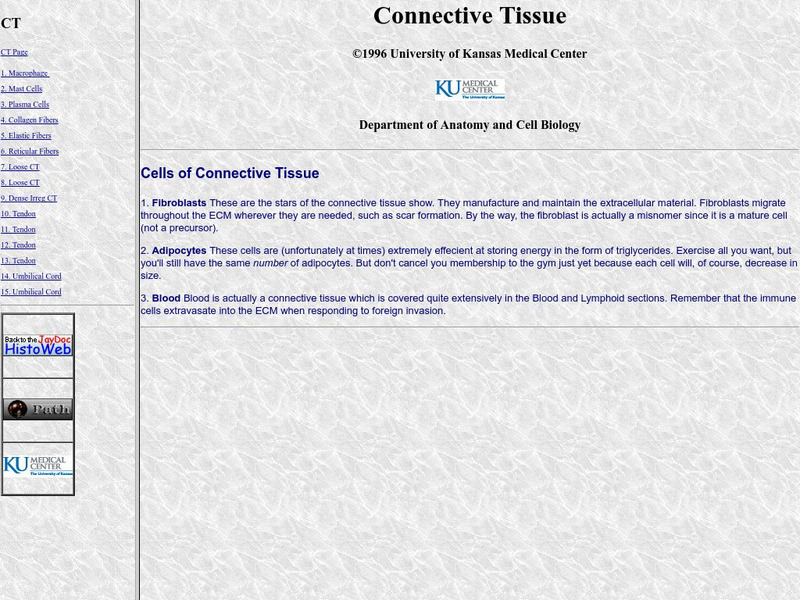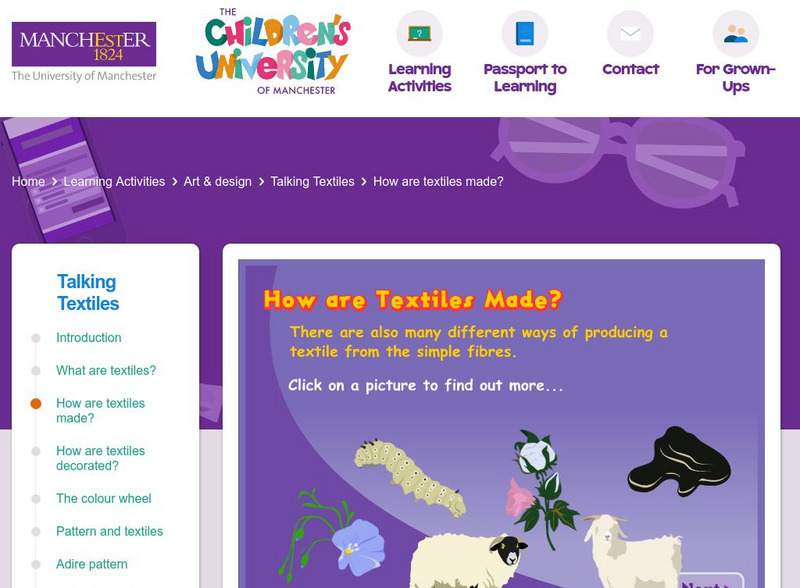Hi, what do you want to do?
Cornell University
Fibers, Dyes, and the Environment
Nanofibers can be made through electrospinning or force spinning in order to reduce the negative impact on the environment. Pupils study the role of fibers and dye on the environment through a series of five hands-on activities. Then,...
Nemours KidsHealth
Healthy Snacking: Quiz (Grades 6-8)
In this healthy snacking and diet quiz, students answer 10 multiple-choice and true-and-false questions that assess their understanding of healthy eating habits.
Museum of Science
Recycled Paper
Watch paper form anew. Scholars take part in an activity where they create new decorative paper from used white and colored office paper. They use a blender to make a pulp slurry, then place it into molds to form the paper. They learn...
Howard Hughes Medical Institute
How Do Fibers Form?
The proteins inside a cell determine the shape of the cell. While most red blood cells have a circular shape, those with sickle cell take the shape of a sickle. This change in shape causes multiple issues in the system. Scholars solve...
Global Oneness Project
Rethinking the Fabrics We Wear
What are fibersheds and what what do they have to do with environmental protections? A photo essay and audio recordings about Mimi Luebbermann, and her sheep, cause consumers to reflect on how their clothing choices can support local...
University of Northern Iowa
Clothing
As part of an investigation of the folk traditions of their area, class members research the articles of clothing worn at earlier times, the fibers and materials, and the machinery used to produce these items. In addition, class...
Curated OER
Dietary Fiber
Students examine the different types of fiber and their benefits. In this investigative lesson students find good sources of fiber in different foods.
Curated OER
Applied Science - Science and Math Post Lab
Students construct paper. In this applied Science lesson, students create paper using lint. Students investigate the different fibers in their homes.
Curated OER
Fit With Fiber
Sixth graders investigate the nutritional value of different types of cereal. They take a survey of students that ate breakfast and create a circle graph with the results. Students examine the nutritional information on the sides of the...
Curated OER
PICTURE PERFECT PYRAMID
Students create a model of the USDA's Food Pyramid Guide, using shoe boxes. They bring an assortment of shoe boxes from home. Students are given a copy of the "Food Guide Pyramid." They wrap boxes for the bread group in white, the...
Curated OER
Healthy Eating Habits
This Healthy Eating PowerPoint summarizes what the different parts of food are and some important examples and facts about each.
Curated OER
Nanofibers: Why Go Small?
Students explore the surface ratio of an object. In this surface area to volume instructional activity students construct a data table, make calculations and create a graph.
Curated OER
Food Guide Pyramid
Students develop an understanding of the Food Guide Pyramid by creating sample meals and examining whether there is a relationship between how foods are grown and where they fall in the Food Guide Pyramid. They also complete a scavenger...
Curated OER
Non-Nutrients: Fiber and Water
Students discuss how much fiber and water a person needs each day. They use beans soaked in water to show the benefits of water to the human body. They also learn the health benefits to eating healthy.
Curated OER
Dietary Fiber Introduction
Students research fiber and consider its sources, functions and importance to overall health. They sample high-fiber items, complete worksheets and take a quiz on their fiber research.
Curated OER
Photosynthesis and Respiration
In this biology learning exercise, students identify and locate various vocabulary terms related to photosynthesis and respiration. There are 15 biology terms located in the word search.
Curated OER
Dietary Fiber Introduction
Students identify fiber from foods, its sources and function in the body. They also the importance of fiber in the diet and good food sources that one can eat. Finally, students discuss water and its importance with eating fiber and...
Curated OER
What does AG have to do with me?
Students practice alphabetizing while categorizing sources of basic agricultural products. They discuss agricultrual products, discover where they are grown and draw a simple agricultural scene on poster board.
Curated OER
Fiber - Adding It To The Diet - Skill Supplement
Students examine and prepare a recipe and state the purpose of each ingredient. They complete a worksheet based on the food pyramid.
Andre Dollinger
Reshafim: Flax
Provides detailed information regarding the growing of flax for weaving into linen cloth by Ancient Egyptians. Includes images illustration Ancient Egyptian flax production.
University of Kansas Medical Center
University of Kansas Medical Center: Connective Tissue
Examine these specimens of connective tissue from the human body.
Other
Corning Optical Fibers
Corning serves as a leader in optical fiber technology and this website provides information about the uses of optical fibers in medical imaging, communication, etc., as well as industry news and related resources.
University of Manchester
Children's University of Manchester: Talking Textiles: How Are Textiles Made?
Interactive exploration of textiles and cloth derived from plants, animals, and petrochemicals.
Georgia State University
Georgia State University: Hyper Physics: Fiber Optics
This physics department site provides a discussion and explanation of fiber optics and fiber optic imaging.




























